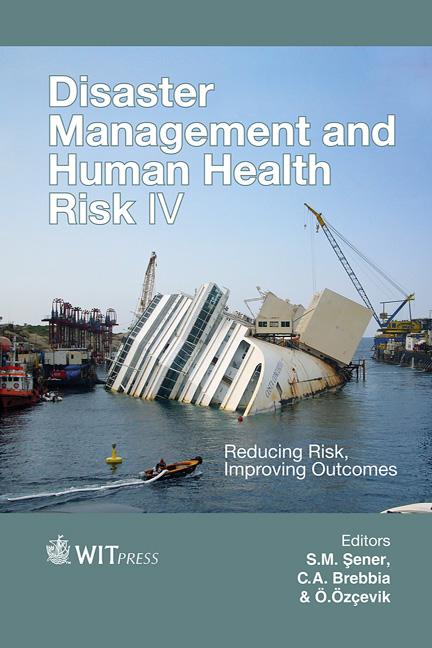The Preparation And Integration Of Turkey’s National Disaster Response Plan
Price
Free (open access)
Transaction
Volume
150
Pages
10
Page Range
1 - 10
Published
2015
Size
665 kb
Paper DOI
10.2495/DMAN150011
Copyright
WIT Press
Author(s)
F. Oktay
Abstract
Turkey frequently faces disasters that lead to human, material, economic, and environmental losses, interruption of social, economic, and community life, adversely affecting development. Located in one of the most seismically active regions in the world, sixty six percent (66%) of Turkey’s surface area lies on Zones 1 and 2 levels of seismic hazard. Besides earthquakes, urban and rural areas need to consider other natural hazards, mainly landslides, floods, rockfalls, avalanches, that can easily couple with physical, social, economic, and environmental vulnerabilities and turn to costly disasters. Under these conditions Prime Ministry Disaster and Emergency Management Authority (AFAD in Turkish) was established in 2009 as the authorized coordination agency to address all phases of disaster management in Turkey, based on the reorganization of relevant major institutions as well as on the available scientific and practical knowledge, field experience of long years, resources, and technology.
After the Van Earthquake (October 2011), the need for development of an integrated national disaster response plan became an increasingly pressing item on the country’s agenda. New studies, approaches, and plans on disaster management emerged, supported by the advancement in technology and increase in public awareness on disasters. Following detailed research on types of events and response needs, AFAD, together with governmental and non-governmental stakeholders, initiated the preparation of the national disaster response plan to define basic principles of action, activities and institutional roles and responsibilities in anticipation of, during and after disasters or emergency situations. The plan is named as Turkey’s National Disaster Response Plan (Türkiye Afet Müdahale Plani – TAMP in Turkish) and put to effect upon official approval as at January 2014.
TAMP, with its flexible, modular-structure, is adaptable to all types and scales of hazards and enables effective planning of resources and coordination of public, private institutions and non-governmental organizations in case of a disaster at local or national level to minimize human and material loss.
Keywords
disaster response, integrated disaster response planning, disaster and emergency management




